에너지 저장을위한 베스는 무엇입니까??
태양광 발전이나 백업 에너지 솔루션을 찾고 있다면, 당신은 의심할 여지없이 "BESS"라는 약어를 접했을 것입니다." 배터리 저장 세계에서 이것이 실제로 의미하는 바는 무엇입니까?? 배터리의 기술적 이름 일뿐입니다, 아니면 더 많은 것입니다? BESS를 이해하는 것이 현대를 이해하는 열쇠입니다., 지능형 에너지 관리.
배터리 저장에서, Bess는 배터리 에너지 저장 시스템을 나타냅니다. 가장 중요한 단어는 "시스템." BESS는 단순한 물리적 배터리 셀이 아닙니다.; 완전합니다, 배터리를 포함하는 통합 솔루션, 중요한 배터리 관리 시스템 (비엠에스), 전력 변환 시스템 (PC), 그게 인버터야, 전력을 안전하고 효율적으로 저장하고 전달하는 데 필요한 제어 소프트웨어 및 안전 구성 요소도 포함됩니다..
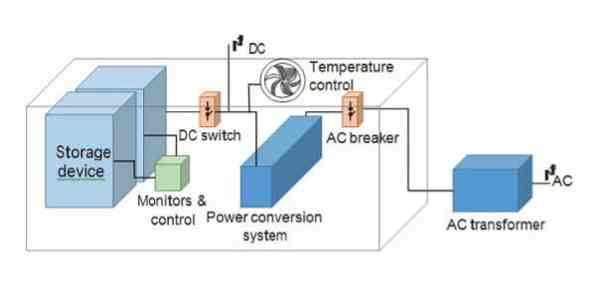
~에 Gycx 솔라, 우리는 이러한 완벽한 BESS 솔루션을 설계하고 설치하는 것을 전문으로 합니다.. 우리는 고객이 완전히 통합된 시스템이 단순한 부품 모음보다 우수한 이유를 알 수 있도록 지식을 제공한다고 믿습니다.. 주변의 뜨거운 주제를 살펴보겠습니다. BESS 배터리 에너지 저장 체계.
베스는 얼마나 오래 에너지를 가질 수 있습니까??
BESS에 태양광 패널의 청정 에너지를 저장했습니다.. 며칠 동안 사용하지 않으면 어떻게 되나요?, 일주일, 아니면 한달이라도? 에너지가 단순히 "누출됩니까?" 나가서 사라지다?
최신 리튬 이온 BESS는 충전 유지에 매우 효과적입니다.. 시간이 지남에 따라 에너지의 아주 작은 부분만 손실됩니다., 자가 방전이라고 불리는 과정. 고품질 LFP (리튬 철 포스페이트) 베스, 우리가 추천하는 것, 일반적으로 잃을 것입니다 1-3% 월별 요금 중. 이는 완전히 충전된 배터리가 몇 달 동안 유휴 상태를 유지한 후에도 여전히 거의 가득 차 있고 사용할 준비가 되어 있음을 의미합니다..
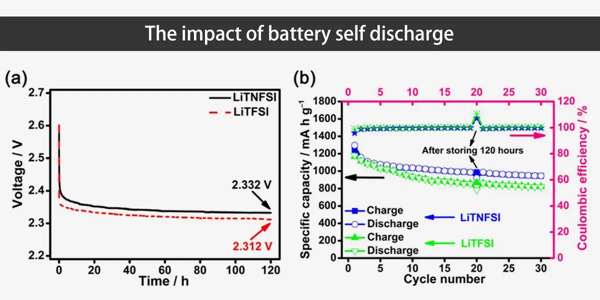
더 깊이 다이빙하십시오: 저장 전하의 과학
BESS의 에너지 유지 능력에 대해 알아야 할 사항은 다음과 같습니다.:
- 자제력: 이것은 느린, 배터리 내부의 자연 화학 과정으로 인해 점차적으로 충전량이 감소됩니다.. 속도는 배터리의 화학적 성질에 따라 결정됩니다..
- 리튬의 장점: 현대 BESS에 사용되는 리튬 이온 화학, 특히 LFP, 납축 배터리와 같은 기존 기술에 비해 매우 안정적이며 자체 방전율이 현저히 낮습니다., 잃을 수 있는 것 5-20% 한 달에 청구.
- 온도의 영향: 열은 자기 전하 속도를 약간 증가시킬 수 있습니다. 서늘한 곳에 BESS를 보관하거나 설치하기, 기후 제어 환경은 더욱 효과적으로 충전을 유지하는 데 도움이 됩니다..
- 대기 소비: 자체 방전과 시스템의 대기 전력 소모를 구별하는 것이 중요합니다.. BESS가 "켜져 있는 경우"" 그리고 준비, 내부 전자 장치 (비엠에스, 인버터) 아주 적은 양의 전력을 소비한다. 하지만, 장기 스토리지를 위해 시스템이 올바르게 종료 된 경우, 배터리 셀 자체의 최소한의 자체 방전만 발생합니다..
모든 실제 목적을 위해, 필요할 때 BESS 매장에서 에너지를 얻을 수 있을 것이라고 확신할 수 있습니다., 그게 오늘 밤이든 다음 달이든.
BESS를 재활용할 수 있나요??
배터리 기술을 수용하면서, 중요하고 책임 있는 질문은: 수명이 다하면 무슨 일이 일어날까? 큰 수 있습니까?, 복합 BESS를 재활용하여 귀중한 물질을 회수하고 환경에 미치는 영향을 최소화합니다.?
예, BESS는 재활용할 수 있고 재활용해야 합니다.. 리튬이온 배터리 재활용은 빠르게 성장하고 혁신하는 산업입니다.. 프로세스는 기존 납축 배터리보다 더 복잡하지만, 전문 시설에서는 BESS 모듈을 안전하게 해체하고 첨단 공정을 사용하여 리튬과 같은 귀중한 물질을 회수할 수 있습니다., 구리, 알류미늄, 강철, 및 기타 금속. 뿐만 아니라, BESS를 선택하는 방법 LFP 화학 처음부터 환경 문제를 크게 줄입니다., 코발트나 니켈이 포함되어 있지 않기 때문에.
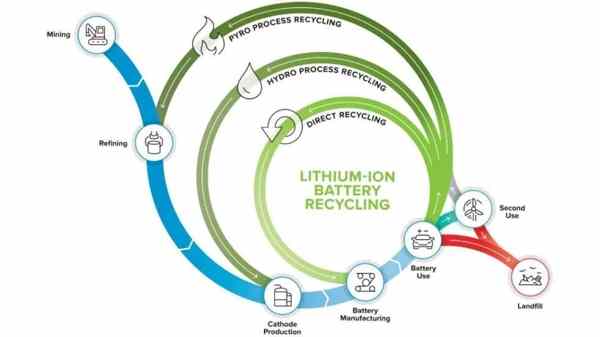
더 깊이 다이빙하십시오: 성장하는 BESS 재활용 생태계
BESS 재활용 현황을 살펴보겠습니다.:
- 프로세스: 재활용에는 일반적으로 통제된 환경에서 배터리 모듈을 파쇄한 다음 습식 야금법을 사용하는 작업이 포함됩니다. (액체로 침출) 또는 건식 야금술 (고열 제련) 원료를 분리, 회수하는 공정.
- 도전과제: 주요 과제는 배터리 셀 내의 다양한 재료를 분리하고 프로세스를 경제적으로 실행 가능하게 만드는 복잡성이었습니다..
- 급진전: 전기차와 에너지 저장장치의 엄청난 성장에 힘입어, 대규모 건물 건설에 막대한 투자가 쏟아지고 있다., 효율적인 재활용 시설, 특히 미국에서는, 유럽, 그리고 아시아. Redwood Materials 및 Li-Cycle과 같은 회사가 이러한 방식을 선도하고 있습니다..
- LFP의 장점: LFP (리튬 철 포스페이트) 배터리는 처음부터 환경 친화적입니다.. 코발트가 포함되어 있지 않습니다., 채굴과 관련하여 심각한 윤리적, 환경적 문제가 있는 광물. 이는 LFP를 보다 지속 가능한 선택으로 만들고 재활용 흐름의 일부 측면을 단순화합니다..
- 우리의 약속: Gycx Solar에서, 우리는 지속 가능성을 위해 최선을 다하고 있습니다. 우리는 최우선적으로 LFP1. 환경적 이점을 위한 기술을 사용하고 인증된 재활용 서비스와 협력하여 수명이 다한 배터리 시스템을 책임감 있게 관리합니다., 순환 배터리 경제의 루프를 닫는 데 도움.
Bess 배터리 에너지 저장 비용은 얼마입니까??
집이나 회사에 BESS를 고려하는 경우, 투자를 이해하는 것이 중요한 첫 번째 단계입니다.. 일반적인 비용은 얼마입니까?, 그리고 어떤 요인이 최종 가격에 영향을 미치는지?
BESS의 총 설치 비용은 크기와 성능에 따라 크게 다릅니다.. 미국에서는, 주거 시스템은 대략적으로 다양합니다. $10,000 더 작은 것을 위해, 엔트리 레벨 시스템 $30,000 더 큰 경우에는 그 이상, 집 전체 백업 솔루션. 주요 비용 동인은 배터리입니다. 에너지 용량 (KWH에서) 그리고 그것의 전력 등급 (KW에서). 단위별로, 비용은 종종간에 있습니다 $800 그리고 $1,500 kWh당 완전히 설치된 주거용 LFP 시스템용.
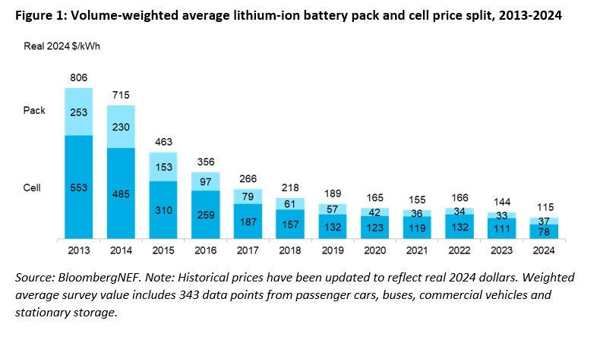
더 깊이 다이빙하십시오: BESS 투자 세분화
BESS의 최종 가격은 부품과 이를 설치하는 데 소요되는 인건비의 합계입니다.:
- 배터리 용량 (kWh): 이것이 가장 큰 비용 요인이다.. 더 많은 저장 용량은 더 많은 배터리 모듈을 의미합니다..
- 전력 등급 (kW): 전력 변환 시스템 (PC), 또는 인버터, BESS가 한 번에 얼마나 많은 전력을 전달할 수 있는지 결정합니다.. 더 까다로운 기기를 실행하기 위한 더 높은 kW 등급은 더 많은 비용을 발생시킵니다..
- 브랜드와 품질: 신뢰성이 검증된 프리미엄 브랜드, 고급 소프트웨어, 더 나은 보증은 비용이 더 높지만 장기적으로 더 나은 가치를 제공하는 경우가 많습니다..
- 설치 복잡성: 모든 설치는 고유하며 전기 작업도 포함됩니다., 허용, 그리고 전문가에 의한 시운전, 인증된 설치업체.
- 연방 ITC: 미국의 큰 요인. 입니다 투자세액공제 (ITC). 이를 통해 공제할 수 있습니다. 30% 총 비용 중 연방세에서 BESS를, 태양광 시스템으로 충전되는 한. 인플레이션감소법 덕분에 2022, 이것 30% 이제 크레딧도 사용할 수 있습니다. 독립형 배터리 저장 (태양광으로 충전되지 않음), BESS를 그 어느 때보다 저렴하게 만들기.
GYCX 태양 이야기: "우리는 고객이 지불하는 금액을 정확히 확인할 수 있도록 항상 자세한 견적을 제공합니다.. 또한 연방 ITC와 같은 귀중한 인센티브를 청구하는 과정을 안내합니다., 이는 전체 투자에 있어 큰 차이를 가져옵니다."
연료전지와 BESS의 차이점은 무엇인가요??
또 다른 신흥 에너지 기술로 수소 연료전지에 대해 들어보셨을 것입니다.. 배터리 에너지 저장 시스템과 어떻게 비교됩니까? (베스)? 그들은 상호 교환 가능합니까??
근본적인 차이점은 이것이다: ㅏ BESS는 에너지입니다 저장 장치, 동안 연료전지는 에너지다 세대 장치. BESS는 다른 곳에서 생산된 전기를 저장합니다. (태양전지판처럼) 나중에 공개하고. 연료전지는 화학반응을 통해 필요에 따라 전기를 생산합니다., 일반적으로 저장된 수소 연료와 공기 중의 산소 사이. BESS는 충전용 배터리와 같습니다.; 연료전지는 화학물질 발생기와 같습니다..
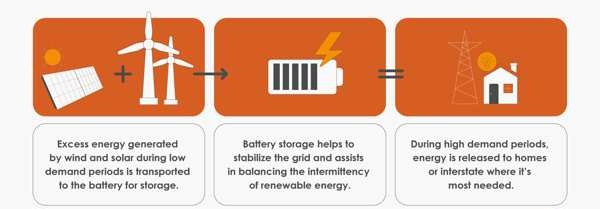
더 깊이 다이빙하십시오: 스토리지 대. 세대
주요 지표를 비교해 보겠습니다.:
| 특징 | 배터리 에너지 저장 시스템 (베스) | 연료전지 시스템 |
|---|---|---|
| 기능 | 백화점 그리고 전기를 방전시킵니다. | 생성 연료에서 나오는 전기. |
| 연료원 | 전기 (태양으로부터, 그리드, 등.). | 수소 가스 또는 기타 연료 (메탄올, 등.). |
| 능률 | 높은 왕복 효율성 (85-95%+). 에너지 손실이 거의 없음. | 낮은 효율성 (40-60%). 수소 생산과 연료전지 반응에서 에너지가 손실됩니다.. |
| 실행 시간 | kWh 저장 용량으로 인해 제한됨. | 저장할 수 있는 연료의 양에 의해서만 제한됩니다.. |
| 응답 시간 | 동시에 일어나는. | 매우 빠르다, 하지만 인스턴트는 아니다 (상승하는 데 몇 초). |
| 배출 | 사용 시점에는 없음. | 물과 열만 (수소연료전지를 위한). |
| 주요 용도 | 태양광 자체 소비, 그리드 서비스, 주거용/상업용 백업. | 장기간 백업, 운송 (FCEV), 특정 산업 공정. |
태양열 저장에 대한 평결: 태양광 패널을 사용하는 주택 소유자 또는 사업체의 경우, BESS는 훨씬 더 효율적이고 실용적인 솔루션입니다.. 매우 높은 효율로 패널에서 생성된 DC 전기를 직접 저장합니다.. 연료전지 시스템에서는 먼저 수소 연료를 생성하기 위해 태양에너지를 사용해야 합니다. (전기분해라고 불리는 비효율적인 과정), 수소를 저장하다, 그런 다음 연료 전지에서 다시 전기로 변환합니다., 결과적으로 훨씬 더 큰 에너지 손실이 발생함.
연료 전지는 특정 장기간 또는 고강도 응용 분야에 적합한 매력적인 기술입니다., a BESS는 집에서 태양 에너지를 효율적으로 포착하고 사용하는 확실한 승자입니다.. Gycx Solar에서, 우리는 현재 이용 가능한 가장 효율적이고 비용 효율적인 BESS 솔루션을 제공하는 데 중점을 두고 있습니다..
BESS는 단순한 배터리 그 이상입니다., 에너지를 통제하는 지능형 시스템. 구성 요소를 이해함으로써, 소송 비용, 전하를 유지하는 놀라운 능력, 다른 기술과의 비교, 이것이 현대 청정 에너지 환경의 초석인 이유를 알 수 있습니다..
방법을 탐색 할 준비가된다면 BESS 배터리 에너지 저장 솔루션으로 비용 절감 가능, 보안, 귀하의 집이나 회사에 대한 지속 가능성, GYCX Solar의 전문가 팀이 당신을 안내하기 위해 여기에 있습니다.. 오늘 전문 상담을 받으려면 저희에게 연락하십시오!
LFP의 개념을 이해하면 배터리 관련 데이터 개념을 더 잘 비교하고 이해하는 데 도움이됩니다.. 이것은 회사의 요구에 가장 적합한 제품을 선택하는 데 도움이됩니다.. ↩
